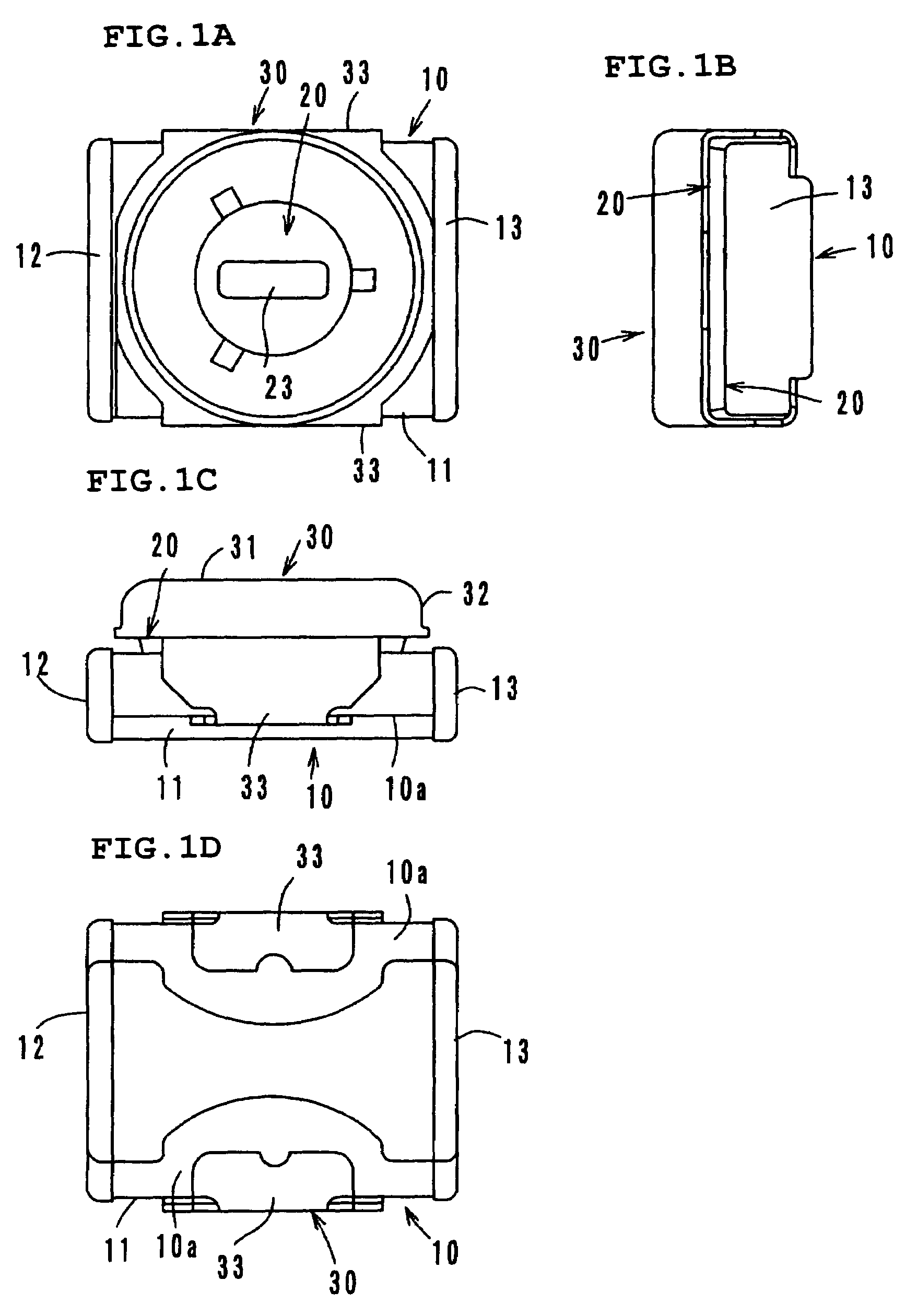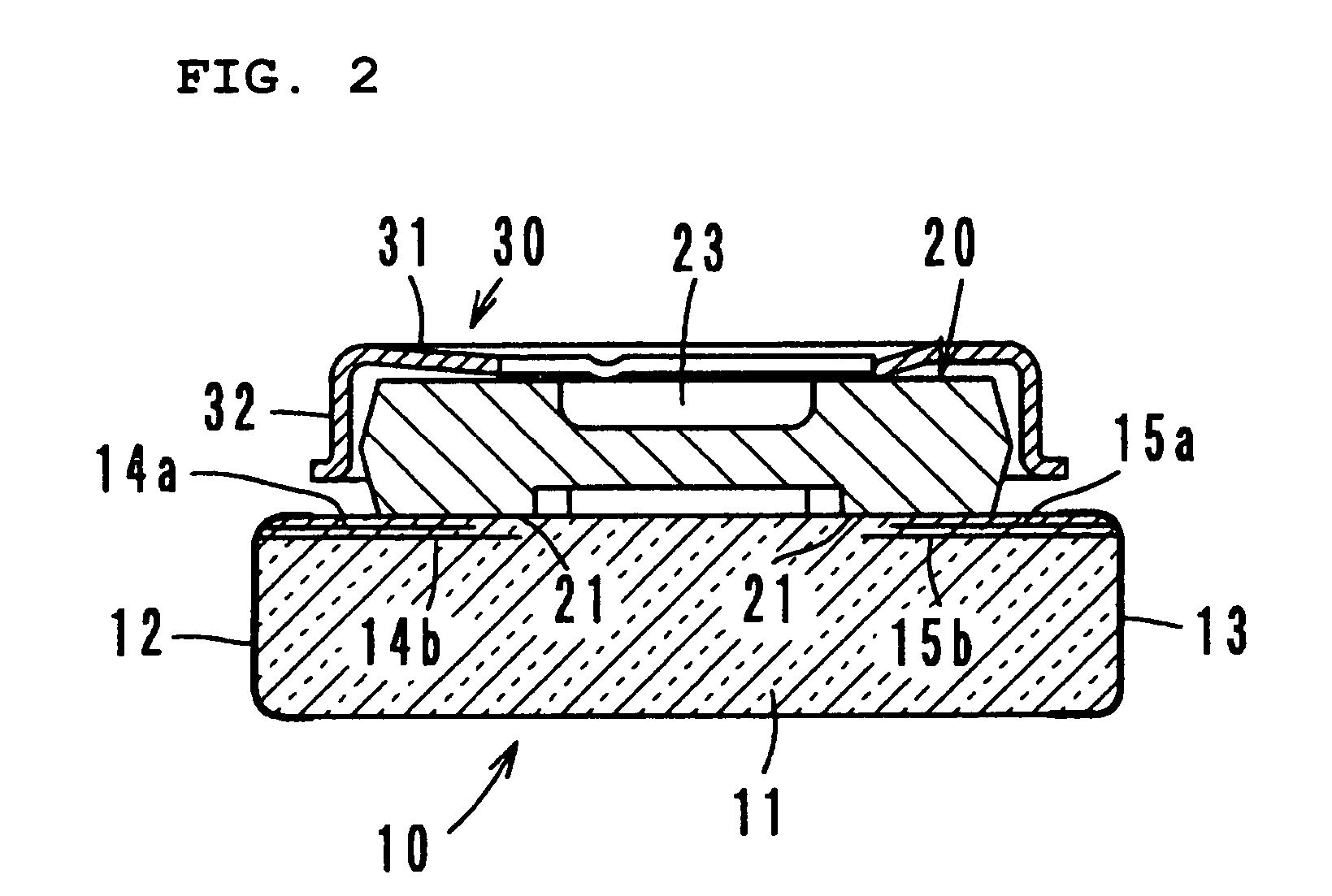Variable capacitor
a variable capacitor and capacitor technology, applied in the field of variable capacitors, can solve the problems of increasing resistance, difficult to operate in a high frequency range, and the capacitance of the variable capacitor cannot be adjusted to an extremely small value or zero, so as to achieve the most efficient determination of maximum value and minimum value capacitance, high self-oscillation frequency, and high frequency range
- Summary
- Abstract
- Description
- Claims
- Application Information
AI Technical Summary
Benefits of technology
Problems solved by technology
Method used
Image
Examples
second preferred embodiment (fig.6)
Second Preferred Embodiment (FIG. 6)
[0034]A variable capacitor according to a second preferred embodiment basically includes the same components as those in the first preferred embodiment. With reference to FIG. 6, the difference is that layers 14a, 14b, and 14c of a first stator electrode and layers 15a, 15b, and 15c of a second stator electrode are disposed in three layers of the dielectric substrate 11 of the stator 10. In FIG. 6, elements and blocks identical to those illustrated and described in relation to FIG. 3 are designated by like reference numerals, and duplicated descriptions are omitted.
[0035]The equivalent circuit of the second preferred embodiment is also shown in FIG. 7. In this preferred embodiment, capacitances C3 and C7 (not shown) are added. The effects are identical to those in the above-described first preferred embodiment of the present invention.
Other Preferred Embodiments
[0036]A variable capacitor according to the present invention is not limited to the abo...
PUM
 Login to View More
Login to View More Abstract
Description
Claims
Application Information
 Login to View More
Login to View More - R&D
- Intellectual Property
- Life Sciences
- Materials
- Tech Scout
- Unparalleled Data Quality
- Higher Quality Content
- 60% Fewer Hallucinations
Browse by: Latest US Patents, China's latest patents, Technical Efficacy Thesaurus, Application Domain, Technology Topic, Popular Technical Reports.
© 2025 PatSnap. All rights reserved.Legal|Privacy policy|Modern Slavery Act Transparency Statement|Sitemap|About US| Contact US: help@patsnap.com



